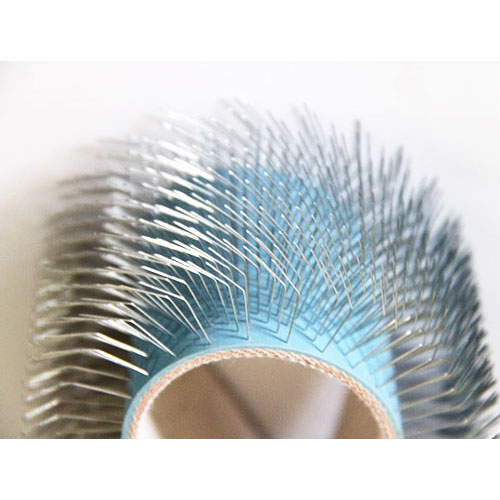Detailed description of Brushed Carding Cloth
2024-06-29
Brushed carding cloth refers to a specialized textile material used in carding machines, which are essential in the textile industry for preparing fibers for spinning into yarn. Here’s a detailed description of what typically characterizes brushed carding cloth:
1. Material Composition:
- Base Material: The base of the carding cloth is typically made from a durable and flexible fabric, often cotton or synthetic fibers like polyester or nylon.
- Carding Surface: The carding surface consists of densely packed wire teeth or pins, which are essential for aligning and separating fibers during the carding process.
2. Construction and Design:
- Wire Teeth: The primary feature of brushed carding cloth is its wire teeth or pins, which are precision-engineered and uniformly distributed across the cloth’s surface.
- Density: The density of wire teeth varies based on the type of fibers being carded and the desired outcome, with finer fibers requiring closer spacing of teeth.
- Carding Angles: The cloth may feature different angles or configurations of wire teeth depending on the specific carding machine and the type of fibers being processed.
3. Functionality:
- Fiber Alignment: The wire teeth on the carding cloth work to separate, align, and blend fibers as they pass through the carding machine.
- Cleaning Action: The brushing action of the wire teeth helps to remove impurities, short fibers (neps), and debris from the raw fiber material.
- Fiber Opening: Opens up compressed or tangled fiber tufts, ensuring a uniform and consistent fiber web that is ready for subsequent processing stages.
4. Types of Brushed Carding Cloth:
- Cylinder Carding Cloth: Used in cylinder carding machines, where the cloth wraps around a cylinder to facilitate the carding process.
- Flat Carding Cloth: Used in flat carding machines, which operate with a flat bed and a moving flat carding cloth to process fibers.
5. Application:
- Textile Industry: Essential in textile mills and manufacturing facilities for processing various types of fibers including cotton, wool, synthetic fibers, and blends.
- Preparation for Spinning: Prepares fibers by aligning them into a continuous web or sliver, which is then drawn out and spun into yarn.
6. Maintenance and Care:
- Cleaning: Requires regular cleaning to remove accumulated fibers, lint, and debris that can affect carding efficiency and quality.
- Replacement: Periodic replacement of carding cloth is necessary due to wear and tear from continuous use, ensuring consistent performance in fiber processing operations.
7. Quality and Performance:
- Durability: High-quality carding cloth is durable and resistant to wear, maintaining its effectiveness over extended periods of use.
- Precision: Manufactured with precision-engineered wire teeth to ensure uniformity and reliability in fiber processing operations.
- Efficiency: Enhances the efficiency of carding machines by optimizing fiber alignment and preparing fibers for subsequent spinning processes.
Brushed carding cloth plays a crucial role in the textile manufacturing process by transforming raw fibers into uniform and consistent fiber webs or slivers ready for spinning into yarn. Its design, construction, and functionality are tailored to meet the rigorous demands of modern textile production, ensuring high-quality yarn production and operational efficiency in textile mills worldwide.



